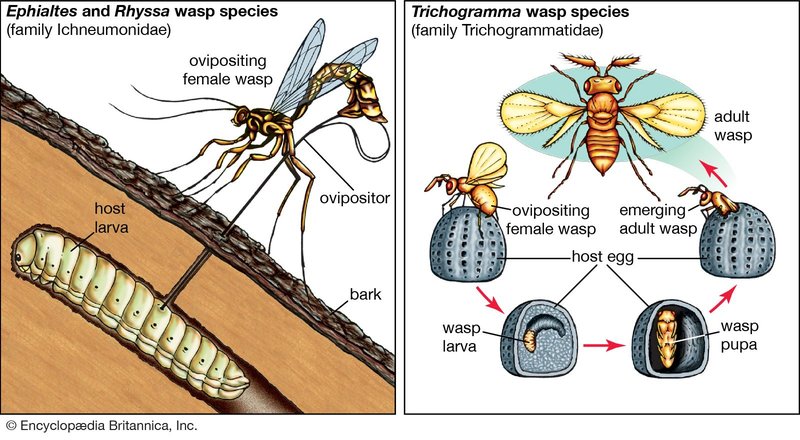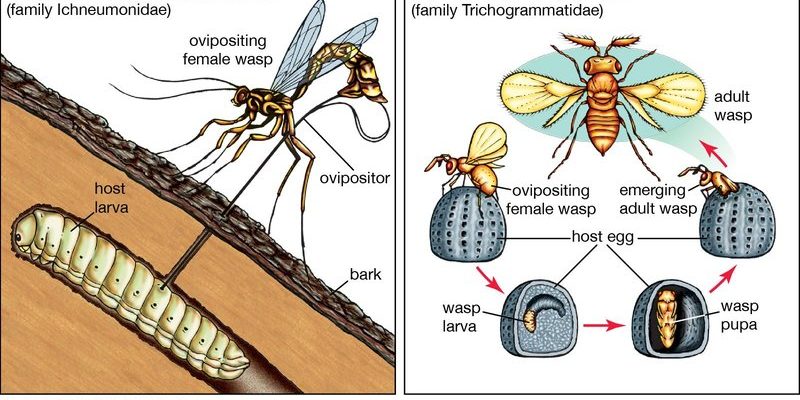
Symbiosis is a term that refers to the interaction between two different organisms, often living closely together. It can be beneficial for one or both species involved. When it comes to wolf worms, they have a specific knack for forming these relationships, especially with insects. Understanding these connections not only highlights the complexity of nature but also gives us a peek into how different species adapt and survive in their environments.
What Are Wolf Worms?
Wolf worms, specifically known as *Hyalomma spp.*, are fascinating little creatures that live within the bodies of various insects. They fall under the category of parasitic organisms, meaning they rely on their hosts for survival. They’re a part of a larger group of worms that often attach themselves to small insects, like beetles and caterpillars, where they can find a cozy spot to live and feed.
These worms have a complicated life cycle. They start as eggs that hatch inside the insect host, and from there, they feed on the host’s tissues or bodily fluids. While this may seem harmful to the host, some species have evolved to live in harmony with their worm residents. Did you know that while the worms do take some nutrients from their hosts, they also can help control the host’s population of harmful microorganisms? This can sometimes lead to a healthier insect!
The Concept of Symbiosis
You might be wondering, “What exactly is symbiosis?” At its core, it refers to a close relationship between different species. There are three main types of symbiosis:
- Mutualism: Both species benefit from the relationship. For instance, bees pollinate flowers while collecting nectar.
- Commensalism: One species benefits while the other is neither helped nor harmed. Think of barnacles on a whale.
- Parasitism: One benefits at the expense of the other, like wolf worms in insects.
Wolf worms exemplify parasitism, as they get nourishment from their hosts, often impacting their health negatively. However, it’s fascinating how many organisms in nature thrive through these types of relationships. Symbiosis showcases the interconnectedness of life and highlights how species have adapted to work together or coexist in various ways.
The Life Cycle of Wolf Worms
The life cycle of wolf worms is pretty incredible. It all begins when the female worm lays her eggs inside an unsuspecting insect. Once the eggs hatch, the young worms, called larvae, begin their journey through the host. They might invade different tissues, but here’s the twist: many insects can survive with these worms living inside them.
Usually, these worms will spend a significant amount of their life feeding on the nutrients available from their host. During this time, the host insect carries on with its daily activities, often unaware of the tiny passengers. Eventually, when the worms reach maturity, they can leave the host to start the cycle all over again in a new insect.
This life cycle illustrates both the tenacity of wolf worms and the resilience of their insect hosts. Sometimes, insects can develop defenses against these invaders, showcasing a constant battle between host and parasite.
Examples of Symbiotic Relationships in Insects
While wolf worms have a specific relationship with their hosts, they are not alone in the world of symbiosis. Here are a few more examples that illustrate different dynamics in the insect kingdom:
- Ants and Aphids: Ants protect aphids from predators in exchange for the sweet honeydew they secrete. It’s a win-win!
- Bees and Flowers: Bees pollinate flowers, helping them reproduce while feeding on nectar. This mutualism is crucial for many ecosystems.
- Termites and Microbes: Termites cannot digest wood alone but rely on microbes in their guts to break it down. It’s a classic case of mutual aid!
These examples remind us that the natural world is filled with various relationships that can be incredibly beneficial or quite the opposite. Each interaction teaches us something about survival, adaptation, and the balance of ecosystems.
The Impact of Wolf Worms on Ecosystems
So, why should we care about wolf worms and their relationships with insects? For starters, these creatures have a role in maintaining the health of ecosystems. By keeping insect populations in check, they may help prevent overpopulation and the resulting depletion of resources.
Also, symbiotic relationships can promote biodiversity. An ecosystem rich in diverse interactions can withstand changes and stresses better than one that is less varied. Wolf worms, alongside other symbiotic relationships, contribute to this complexity, creating a web of interactions that sustain life.
Additionally, studying these relationships can offer insights into the health of specific ecosystems. Changes in the distribution or health of certain species, including wolf worms, can signal shifts in environmental conditions. Understanding these connections helps scientists and conservationists monitor and protect habitats.
The world of wolf worms and their insect hosts is just one example of nature’s complexity. Through symbiotic relationships, organisms find ways to survive, adapt, and thrive together. It reminds us that life isn’t just about competition; sometimes, cooperation is the key to survival.
Whether you’re fascinated by worms, insects, or the interconnectedness of life, there’s always more to learn. These relationships might be overlooked by many, but they play a vital role in ecosystems around the globe. Understanding them can deepen our appreciation for the delicate balance of nature that surrounds us every day.

